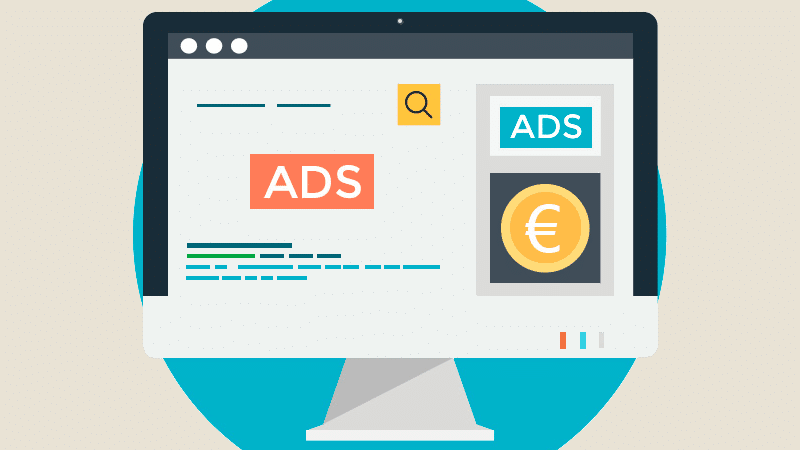In today's digital age, it's in every company's interest to appear on search engines (and social networks). But on Bing, Yahoo and Google, the competition is particularly intense. To ensure a top position, it's best to implement an SEA strategy.
So what is it all about? How does it work? What are the advantages and disadvantages? Find out the answers.
What is SEA?
SEA (or Search Engine Advertising) helps companies to position themselves on search engines through advertising. To do this, they pay for ads that appear in different places:
- Search campaigns: the advertising inserts are located at the top of the first page of search results (above the so-called natural results). To differentiate them, the word “ad” is used.
- Display campaigns: sponsored links are displayed within a partner website.
Shopping campaigns: products can be promoted directly in the shopping area.
All these commercial links lead to a landing page (home page, sales page, etc.). This enables the brand to increase its visibility, generate qualified traffic and boost sales.
Good to know: it is possible to use paid search on all search engines (Google, Bing, Yahoo or Qwant). But it has to be said that Google has acquired a real monopoly (more than 91% in April 2023).
How does paid search work?
The implementation of a SEA strategy is based on the following stages:
Define the request
To implement a paid search strategy, brands first need to define a list of keywords. These keywords must
- Be related to the ad: a sales page for a new television must include keywords related to this sales page. For example: “buy flat screen TV”, “buy large screen TV”, etc.
- Correspond to a user’s search intention: if nobody searches for the key query defined, the brand will receive few (if any) clicks.
- The campaign will therefore be pointless.
Good to know: because of the fierce competition in terms of paid referencing (particularly on Google Ads), some companies don’t hesitate to use the name of a well-known brand for their advertising. So it’s vital to protect your brand name.
💡Related articles:

Defining your bid
Pay-per-click advertising on search engines is based on a bidding system. This means that the advertising company only pays if the user actually clicks on the link.
But to be sure of appearing in first position, you need to set the right bids (not too low compared with the competition). And with good reason: search engines base their decisions on search intent, but also on the bids offered.
Writing a relevant advert
The aim is to encourage web users to click on the link, so companies need to take great care with their advert. In particular through :
- The title: this must encourage users to click.
- The description: as well as encouraging clicks, it should tell users what they will find when they click on the page.
- The URL: the URL must not be a series of numbers or letters without any meaning. The aim is to let users know where they are going.
In all cases, the key request must be integrated into each of these elements.
Tracking the performance of your SEA campaigns
More and more brands are implementing an SEA strategy. To stand up to the competition, you need to find the right search query (in particular with the best search intent), propose the most appropriate bid, incorporate copywriting into your ad, etc.
There are many different ways of optimising your SEA strategy. Some are effective, others less so. To find out which ones to use, you need to monitor your performance indicators. This will enable you to optimise your paid search strategy, both in terms of cost and traffic.
What are the advantages and disadvantages of SEA?
The undeniable advantage of SEA is the ability to gain visibility quickly. And with good reason: if the campaign is well run, companies see results immediately. But this positioning obviously comes at a significant cost (several hundred to several thousand euros per month).
And if they stop paying, their hard-earned visibility disappears immediately. That’s why it’s best to pursue a search engine optimisation (SEO) strategy at the same time. The idea here is to rank on the first page of search engines thanks to quality content, an optimised website and authoritative external links. This strategy is much slower than SEA, but it allows you to establish yourself in the SERPs over the long term.
How is AI used in SEA?
The performance of an SEA campaign depends to a large extent on knowledge of the target audience. Advertisers need to know the search intentions of their ideal customers in order to choose the right keywords and write the right advert. In this respect, the development of artificial intelligence tools is a valuable ally.
But as well as improving customer knowledge, these AI tools are capable of defining the most effective parameters to help companies optimise their ROAS (return on advertising investment). For example, the most relevant bid to appear in first position with an optimal budget.

Things to remember
- SEA helps companies to position themselves on the first page of search engines through advertising.
- But to be sure of appearing in first place, you need to choose your key query carefully, set the right bid, take care with your ad and monitor its performance.
- Artificial intelligence can help companies make the best decisions and optimise their paid search strategy.










